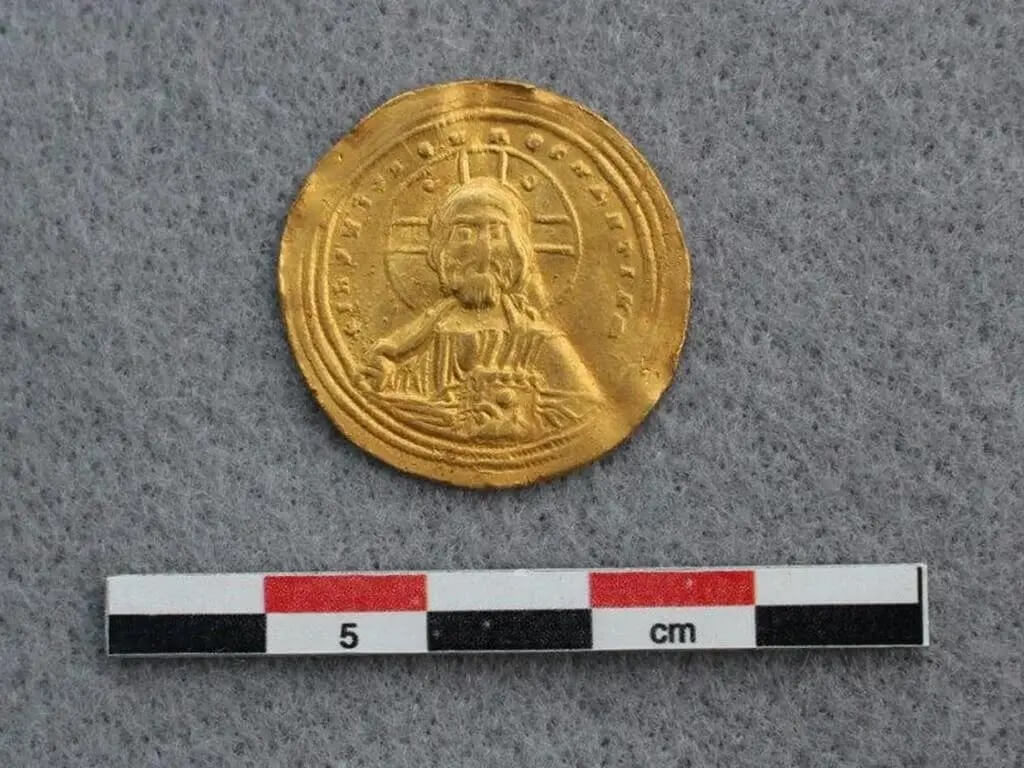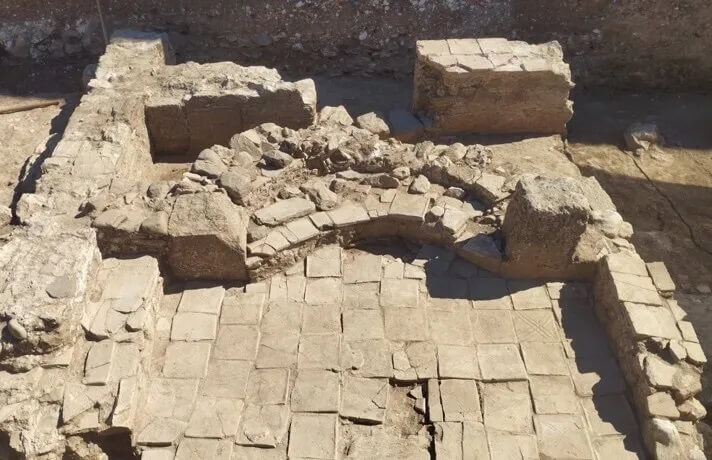Discovery of a rare 1000-year-old Byzantine gold coin in the Norwegian mountains
While exploring the mountains of Vestre Slidre in southern Norway, a metal detectorist made a remarkable discovery—a pristine Byzantine gold coin, thought to originate from the late 10th or early 11th Century.
A Byzantine gold histamenon nomisma.
The Innlandet County Municipality revealed the discovery, heralding it as a remarkably rare histamenon nomisma, a solid gold coin minted in Constantinople after 976 CE. It is the only one of its kind ever found in Norway, and has astonished archaeologists with its exceptional preservation.
It showcases depictions of Jesus Christ alongside the co-reigning emperors of the time, Basil II and Constantine VIII, from the Macedonian dynasty. Both co-reigned between 976 and 1025, when Constantine passed away. The coin’s inscriptions are in both Latin and Greek. One side boldly proclaims “Jesus Christ, King of those who reign,” while the other declares “Basil and Constantine, emperors of the Romans.


From Constantinople to Norway : How did the coin reached Scandinavia?
The coin has traveled over 1600 miles from its minting site, the Byzantine capital, and experts speculate on its potential ties to the Varangian Guard. The Varangian Guard was the Byzantine emperor’s guard in the Macedonian era, composed of northern Europeans, mostly Vikings.
The most famous member of this guard was the future King Harald III. Harald Hardrada’s connection to the Byzantine Empire further fuels speculation. A member of the Varangian Guard around 1034-1042, Harald reportedly sent treasures acquired during his service to Prince Yaroslav in Kiev, contributing to a dowry for his marriage to one of Yaroslav’s daughters, Ellisiv. The coin’s depiction of Basil II, who was Ellisiv’s great-uncle, strengthens this familial connection. May-Tove Smiseth, the county archaeologist for Innlandet, considers that the coin could be part of the immense wealth Harald and his men brought back to Norway in 1046.
While the exact path the coin took to arrive in Norway remains uncertain, the discovery’s location in Vestre Slidre, within the historic area of Valdres, sparks intriguing possibilities. The region’s ties to trade routes, notably the Bispevegen (Bishop’s Way), contribute to the enigma. Valdres, once part of the Bjørgvin diocese until 1125, played a significant role in the early salt trade across western Norway.
The late autumn unearthing of the coin leaves archaeologists eager for further exploration, although investigations are scheduled for 2024 due to seasonal limitations. This find adds to a series of remarkable discoveries in Norway, including an ancient gold cache on Rennesøy Island and gold artifacts near Vingrom.






